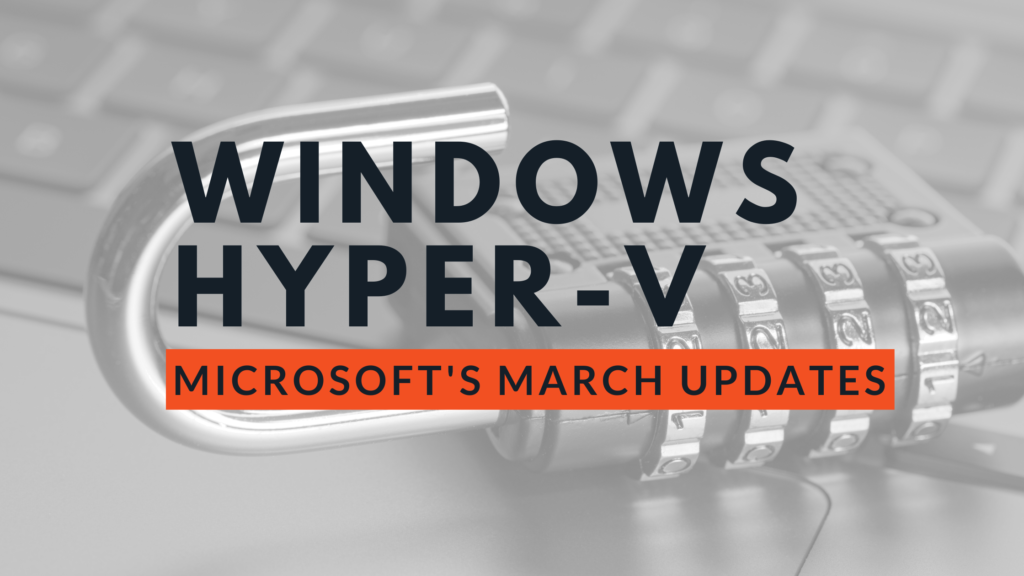In the digital age, the arms race between cybersecurity measures and cyber threats seems unending. Microsoft, a cornerstone in the field of technology, has once again taken a step forward in this ongoing battle by releasing its monthly security updates for March 2024. These updates target a staggering 61 vulnerabilities across its software spectrum, shining a spotlight on two particularly critical issues impacting Windows Hyper-V. This blog delves into the nuances of these vulnerabilities, CVE-2024-21407 and CVE-2024-21408, and provides a comprehensive blueprint for navigating these treacherous cybersecurity waters.

CVE-2024-21407: The Remote Code Execution Vulnerability
CVE-2024-21407 stands out as a stark reminder of the potential breach points in software security. This vulnerability allows for what is termed a “guest-to-host escape”, enabling attackers to execute code remotely on the host server from within a guest virtual machine. Such a capability not only undermines the security of the host server but also opens up avenues for attackers to manipulate, control, or even compromise the entire virtualization platform.
The ability to execute code remotely is a formidable weapon in the arsenal of cyber attackers. It can lead to data theft, system manipulation, and a host of other nefarious activities, all of which threaten the integrity and reliability of the affected organization’s IT infrastructure.
CVE-2024-21408: The Denial of Service (DoS) Vulnerability
The second critical flaw, CVE-2024-21408, introduces a denial-of-service (DoS) condition by causing the Hyper-V service to crash, rendering it unusable. This not only disrupts the normal operation of the service but can also have a cascading effect on the functionality of other virtual machines running on the same host. While this vulnerability does not allow an attacker to execute code or elevate user rights on other VMs, it significantly impairs the manageability of VMs, potentially leading to operational downtime and service disruptions.
Mitigating the Risks: A Proactive Approach
Addressing these vulnerabilities necessitates a multifaceted approach. For CVE-2024-21407, immediate patching is imperative to seal the breach point. Microsoft has made patches available as part of its March 2024 updates, and their swift application cannot be overstated. In addition to patching, organizations should reinforce their security posture through rigorous access controls, continuous monitoring of suspicious activities, and implementing best practices in virtual machine management.
CVE-2024-21408 requires a diligent approach to mitigation as well. Disabling the Hyper-V role if unnecessary, applying security updates promptly, and adopting robust network security measures are crucial steps in preventing potential exploit attempts. Furthermore, staying informed about the latest security advisories related to Hyper-V vulnerabilities is essential for maintaining a secure virtualization environment.
Evaluating and Enhancing Your Cybersecurity Infrastructure
Ensuring the security of your Windows Hyper-V installation involves a proactive stance on patch management and vulnerability assessment. Regularly applying security updates and monitoring Microsoft’s security advisories are vital components of a robust cybersecurity strategy. Additionally, verifying the enablement of the Hyper-V role and assessing the necessity of its operation can prevent unnecessary exposure to vulnerabilities.
The latest updates, such as the security update referenced as (3047234) for Windows Server 2012 R2, address these critical vulnerabilities by enhancing validation mechanisms and preventing exploitation. Organizations should prioritize the application of these updates to safeguard their virtualization platforms against potential cyber threats.
Conclusion: Safeguarding the Digital Frontier
Microsoft’s March 2024 security updates serve as a crucial reminder of the ever-evolving landscape of cybersecurity threats. The vulnerabilities CVE-2024-21407 and CVE-2024-21408 represent significant risks to organizations leveraging Windows Hyper-V for virtualization. However, with a comprehensive understanding of these vulnerabilities and a proactive approach to their mitigation, organizations can navigate these challenges and fortify their digital defenses.
In an era where cyber threats are increasingly sophisticated, the importance of partnering with cybersecurity experts cannot be understated. Bluefire Redteam stands ready to assist organizations in enhancing their cybersecurity posture, providing expert services tailored to navigate the complexities of digital security.


